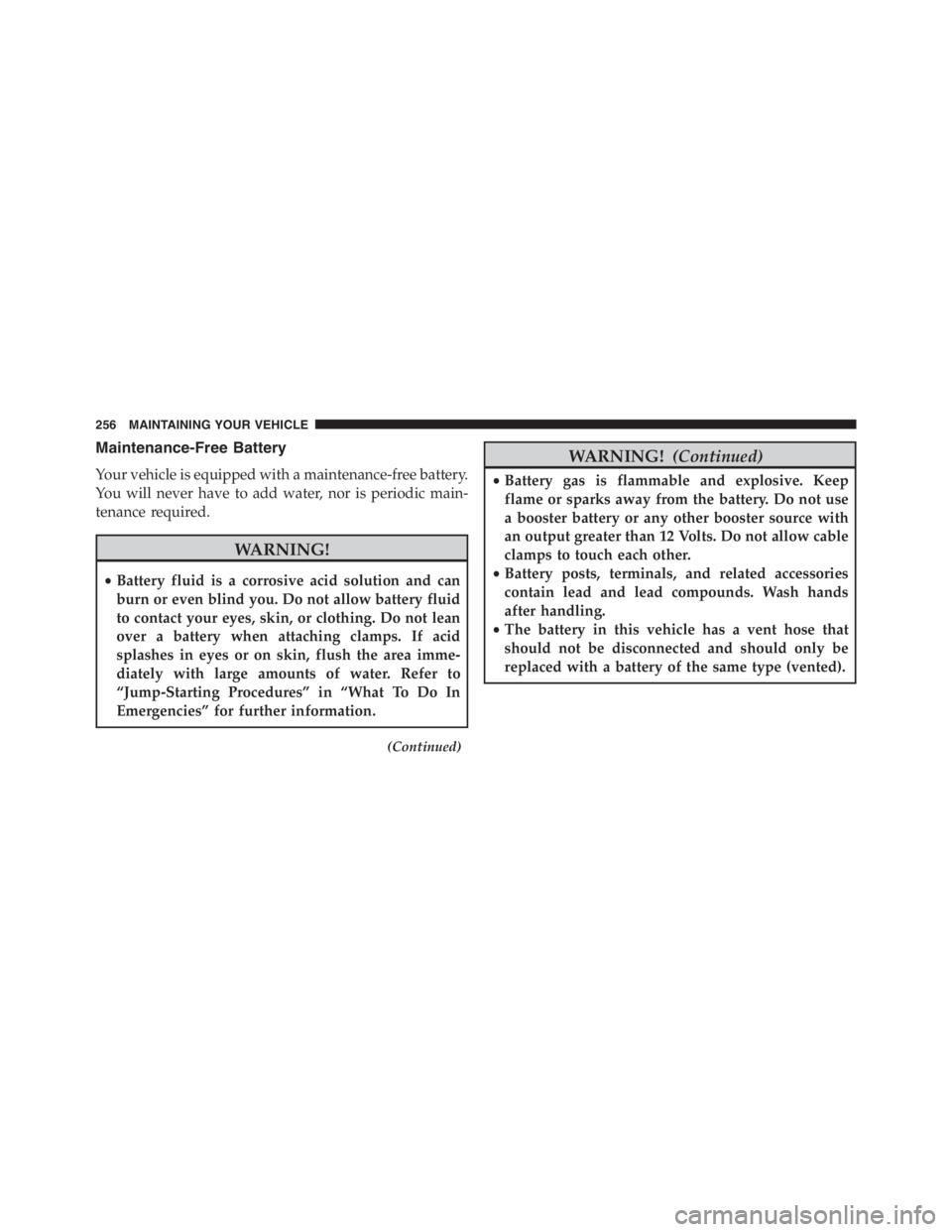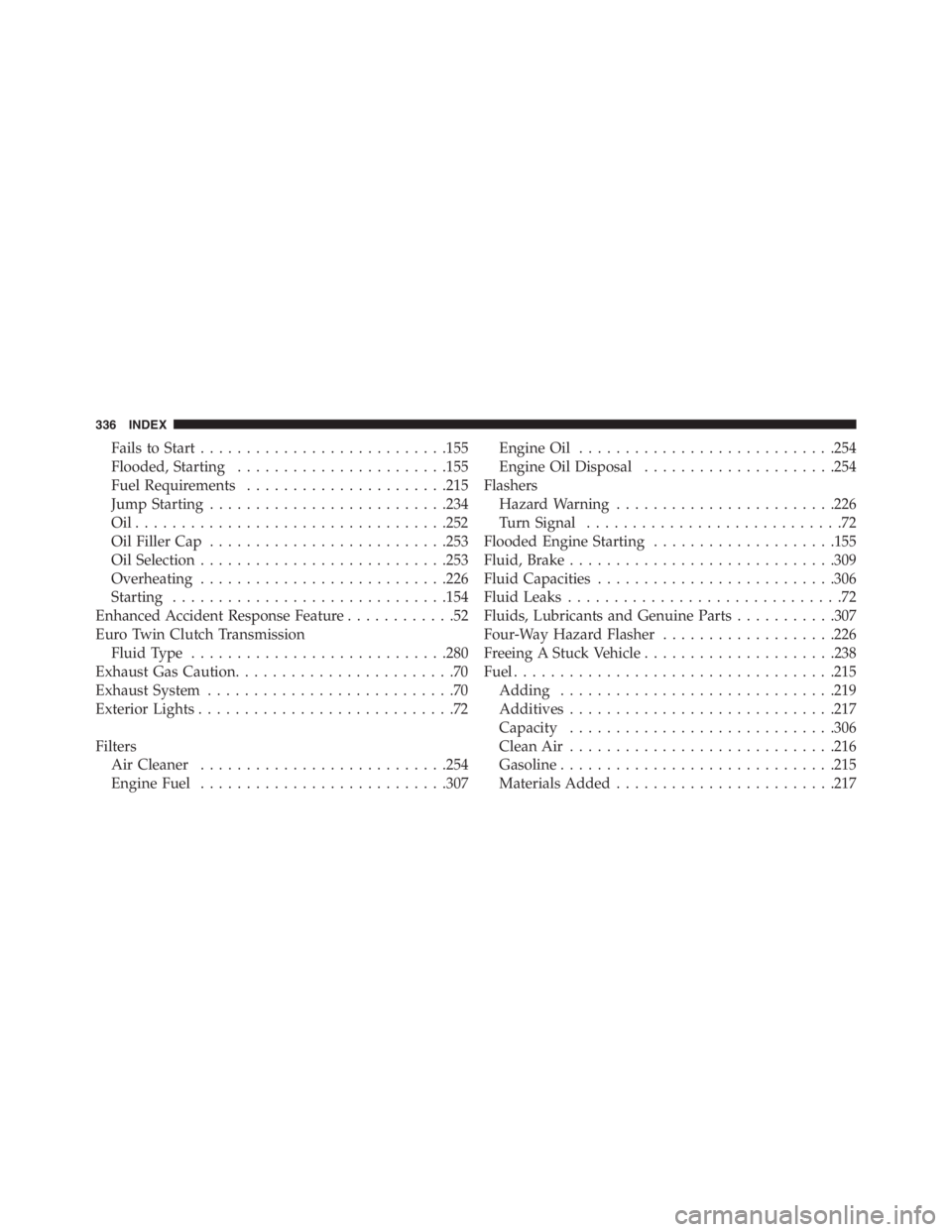Page 49 of 348

WARNING!(Continued)
•Relying on the air bags alone could lead to more
severe injuries in a collision. The air bags work
with your seat belt to restrain you properly. In
some collisions, air bags won’t deploy at all. Al-
ways wear your seat belts even though you have air
bags.
Advanced Front Air Bag Operation
Advanced Front Air Bags are designed to provide addi-
tional protection by supplementing the seat belts. Ad-
vanced Front Air Bags are not expected to reduce the risk
of injury in rear, side, or rollover collisions. The Ad-
vanced Front Air Bags will not deploy in all frontal
collisions, including some that may produce substantial
vehicle damage — for example, some pole collisions,
truck underrides, and angle offset collisions.On the other hand, depending on the type and location of
impact, Advanced Front Air Bags may deploy in crashes
with little vehicle front-end damage but that produce a
severe initial deceleration. Because air bag sensors mea-
sure vehicle deceleration over time, vehicle speed and
damage by themselves are not good indicators of
whether or not an air bag should have deployed.
Seat belts are necessary for your protection in all colli-
sions, and also are needed to help keep you in position,
away from an inflating air bag.
When the ORC detects a collision requiring the Ad-
vanced Front Air Bags, it signals the inflator units. A large
quantity of non-toxic gas is generated to inflate the
Advanced Front Air Bags.
The steering wheel hub trim cover and the upper right
side of the instrument panel separate and fold out of the
way as the air bags inflate to their full size. The Advanced
Front Air Bags fully inflate in less time than it takes to
blink your eyes. The air bags then quickly deflate while
helping to restrain the driver and front passenger.
2
THINGS TO KNOW BEFORE STARTING YOUR VEHICLE 47
Page 155 of 348

▫Tire Types...........................200
▫Run Flat Tires — If Equipped.............202
▫Spare Tires — If Equipped...............202
▫Tire Spinning........................205
▫Tread Wear Indicators..................205
▫Life Of Tire.........................206
▫Replacement Tires.....................206
�TIRE CHAINS (TRACTION DEVICES).......208
�TIRE ROTATION RECOMMENDATIONS.....209
�TIRE PRESSURE MONITORING SYSTEM
(TPMS)..............................210
▫Base System.........................212
▫General Information...................215�FUEL REQUIREMENTS — 1.750 Turbo.......215
▫Reformulated Gasoline.................216
▫Gasoline/Oxygenate Blends..............216
▫MMT In Gasoline.....................216
▫Materials Added To Fuel................217
▫Fuel System Cautions...................217
▫Carbon Monoxide Warnings.............218
�ADDING FUEL/SMART FUEL.............219
�TRAILER TOWING.....................222
�RECREATIONAL TOWING (BEHIND
MOTORHOME, ETC.)...................222
▫Towing This Vehicle Behind Another Vehicle . .222
5
STARTING AND OPERATING 153
Page 258 of 348

Maintenance-Free Battery
Your vehicle is equipped with a maintenance-free battery.
You will never have to add water, nor is periodic main-
tenance required.
WARNING!
•Battery fluid is a corrosive acid solution and can
burn or even blind you. Do not allow battery fluid
to contact your eyes, skin, or clothing. Do not lean
over a battery when attaching clamps. If acid
splashes in eyes or on skin, flush the area imme-
diately with large amounts of water. Refer to
“Jump-Starting Procedures” in “What To Do In
Emergencies” for further information.
(Continued)
WARNING!(Continued)
•Battery gas is flammable and explosive. Keep
flame or sparks away from the battery. Do not use
a booster battery or any other booster source with
an output greater than 12 Volts. Do not allow cable
clamps to touch each other.
•Battery posts, terminals, and related accessories
contain lead and lead compounds. Wash hands
after handling.
•The battery in this vehicle has a vent hose that
should not be disconnected and should only be
replaced with a battery of the same type (vented).
256 MAINTAINING YOUR VEHICLE
Page 275 of 348

Points To Remember
NOTE:When the vehicle is stopped after a few miles/
kilometers of operation, you may observe vapor coming
from the front of the engine compartment. This is nor-
mally a result of moisture from rain, snow, or high
humidity accumulating on the radiator and being vapor-
ized when the thermostat opens, allowing hot engine
coolant (antifreeze) to enter the radiator.
If an examination of your engine compartment shows no
evidence of radiator or hose leaks, the vehicle may be
safely driven. The vapor will soon dissipate.
•Do not overfill the coolant expansion bottle.
•Check the coolant freeze point in the radiator and in
the coolant expansion bottle. If engine coolant (anti-
freeze) needs to be added, the contents of the coolant
expansion bottle must also be protected against freez-
ing.•If frequent engine coolant (antifreeze) additions are
required, the cooling system should be pressure tested
for leaks.
•Maintain engine coolant (antifreeze) concentration at a
minimum of 50% OAT coolant (conforming to MS-
90032) and distilled water for proper corrosion protec-
tion of your engine which contains aluminum compo-
nents.
•Keep the front of the radiator clean. If your vehicle is
equipped with air conditioning, keep the front of the
condenser clean.
•Do not change the thermostat for Summer or Winter
operation. If replacement is ever necessary, install
ONLY the correct type thermostat. Other designs may
result in unsatisfactory engine coolant (antifreeze)
performance, poor gas mileage, and increased emis-
sions.
7
MAINTAINING YOUR VEHICLE 273
Page 338 of 348

Fails to Start...........................155
Flooded, Starting.......................155
Fuel Requirements......................215
Jump Starting..........................234
Oil..................................252
Oil Filler Cap..........................253
Oil Selection...........................253
Overheating...........................226
Starting..............................154
Enhanced Accident Response Feature............52
Euro Twin Clutch Transmission
Fluid Type............................280
Exhaust Gas Caution........................70
Exhaust System...........................70
Exterior Lights............................72
Filters
Air Cleaner...........................254
Engine Fuel...........................307Engine Oil............................254
Engine Oil Disposal.....................254
Flashers
Hazard Warning........................226
Turn Signal............................72
Flooded Engine Starting....................155
Fluid, Brake.............................309
Fluid Capacities..........................306
Fluid Leaks..............................72
Fluids, Lubricants and Genuine Parts...........307
Four-Way Hazard Flasher...................226
Freeing A Stuck Vehicle.....................238
Fuel...................................215
Adding..............................219
Additives.............................217
Capacity.............................306
Clean Air.............................216
Gasoline..............................215
Materials Added........................217
336 INDEX